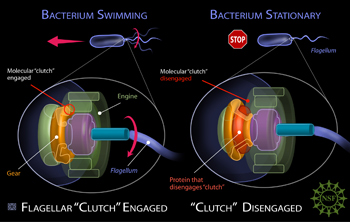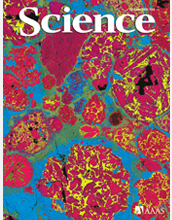All Images
News Release 08-105
Microscopic "Clutch" Puts Flagellum in Neutral
Insights into the workings of the flagellum may advance nanotechnology
This material is available primarily for archival purposes. Telephone numbers or other contact information may be out of date; please see current contact information at media contacts.

Swimming helps bacteria look for food, escape bad conditions and disperse their genes. But when a bacterium needs to stop swimming, it produces a free-floating clutch (a protein shown in red), that sits down on a gear-like ring (orange), moving that gear away from the engine that spins the bacterium's flagellum. By disengaging the engine from the flagellum's other moving parts, the flagellum's tail is no longer driven to spin.
Credit: Zina Deretsky, National Science Foundation
Download the high-resolution JPG version of the image. (596 KB)
Use your mouse to right-click (Mac users may need to Ctrl-click) the link above and choose the option that will save the file or target to your computer.

The June 20, 2008 issue of Science.
Credit: Copyright 2008 AAAS
Download the high-resolution JPG version of the image. (2.2 MB)
Use your mouse to right-click (Mac users may need to Ctrl-click) the link above and choose the option that will save the file or target to your computer.


